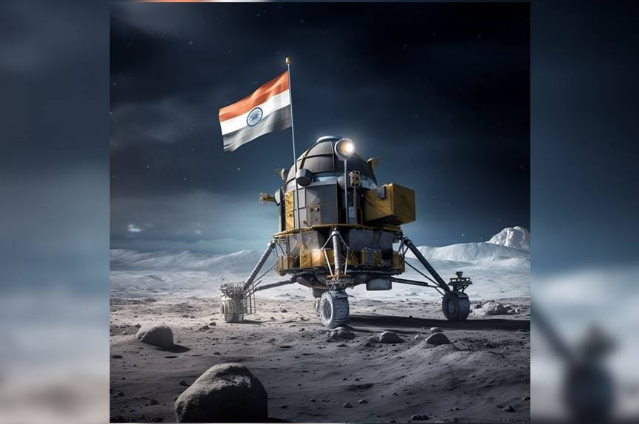
Image by Graphix Made from Pixabay
Introduction:
In the realm of space exploration, India has emerged as a formidable player, marked by its successful missions and groundbreaking achievements. The Chandrayaan series, dedicated to lunar exploration, has been a testament to the nation's prowess in space science and technology. Building upon the success of its predecessors, Chandrayaan-1 and Chandrayaan-2, the Indian Space Research Organisation (ISRO) is gearing up for yet another lunar odyssey – Chandrayaan-3. This mission promises to elevate India's standing in the global space community and unlock further mysteries of the moon.
Chandrayaan-3: A Sequel to Success:
Chandrayaan-3 is the third installment in India's lunar exploration program, following the triumphs of Chandrayaan-1 and Chandrayaan-2. The mission aims to continue unraveling the moon's mysteries, with a particular focus on enhancing scientific understanding and technological capabilities. While Chandrayaan-1 was primarily an orbiter mission and Chandrayaan-2 included an orbiter, lander, and rover, Chandrayaan-3 is anticipated to refine these capabilities and build upon the valuable lessons learned from its predecessors.
Scientific Objectives:
Chandrayaan-3's scientific objectives are multi-faceted, ranging from mapping lunar terrain and studying the moon's mineral composition to exploring the presence of water molecules and volatile elements on its surface. By leveraging advanced instruments and cutting-edge technology, the mission aims to gather data that will contribute significantly to our understanding of the moon's geological and topographical features.
Technological Advancements:
One of the key highlights of Chandrayaan-3 is the incorporation of advanced technologies that will enhance mission efficiency and data collection. The lander and rover components, in particular, are expected to showcase improvements in mobility, communication, and analytical capabilities. These advancements underscore India's commitment to pushing the boundaries of space exploration and fostering innovation in the field of space science.
Collaborations and International Partnerships:
In the spirit of global collaboration, Chandrayaan-3 is likely to build on the success of its predecessors by fostering international partnerships. Collaborations with other space agencies and scientific institutions could pave the way for shared resources, expertise, and a more comprehensive understanding of lunar phenomena. Such collaborations not only enhance the mission's scientific output but also promote a spirit of cooperation in the global space community.
Challenges and Risks:
Space exploration is inherently challenging, and Chandrayaan-3 is no exception. The mission faces risks associated with the launch, orbital maneuvers, and the descent of the lander onto the lunar surface. Learning from past experiences and leveraging technological advancements, ISRO is poised to navigate these challenges and ensure the success of Chandrayaan-3.
Conclusion:
Chandrayaan-3 represents the next chapter in India's ambitious lunar exploration saga. With its scientific objectives, technological advancements, and potential collaborations, the mission is poised to contribute significantly to our understanding of the moon and the broader field of space science. As India continues to assert its presence in the global space arena, Chandrayaan-3 stands as a testament to the nation's commitment to pushing the boundaries of knowledge and exploration.
